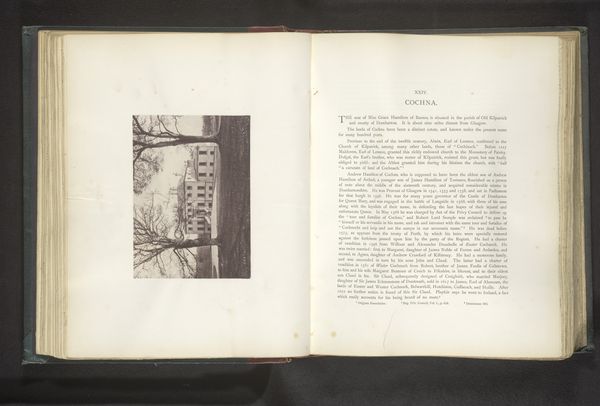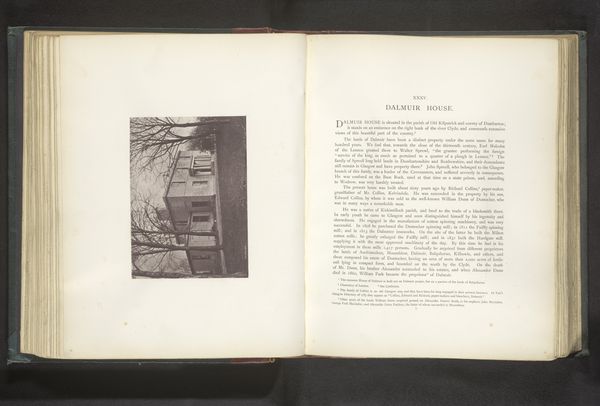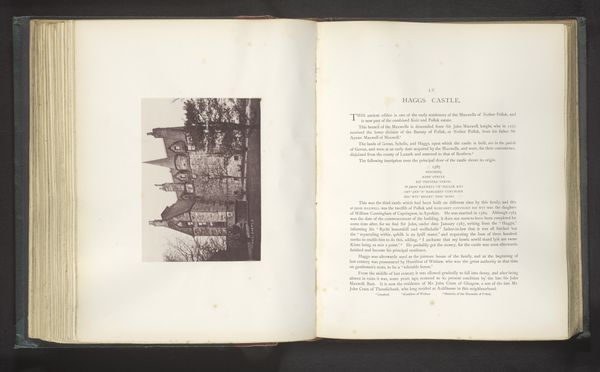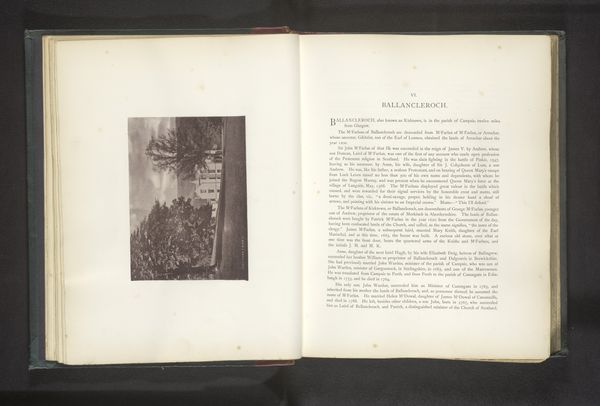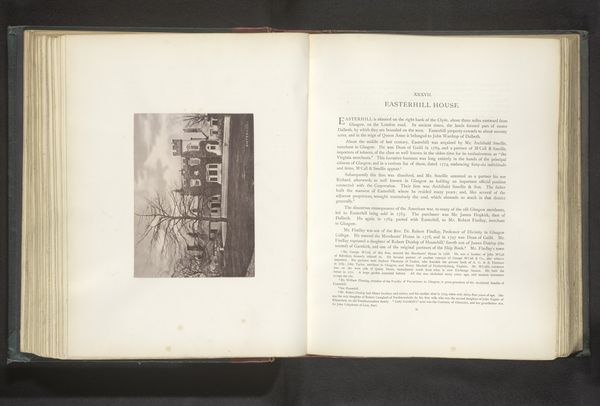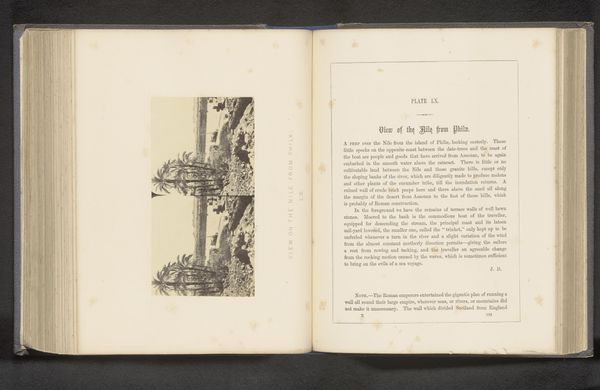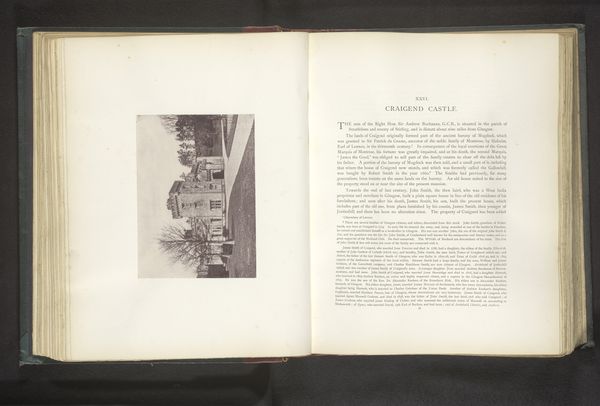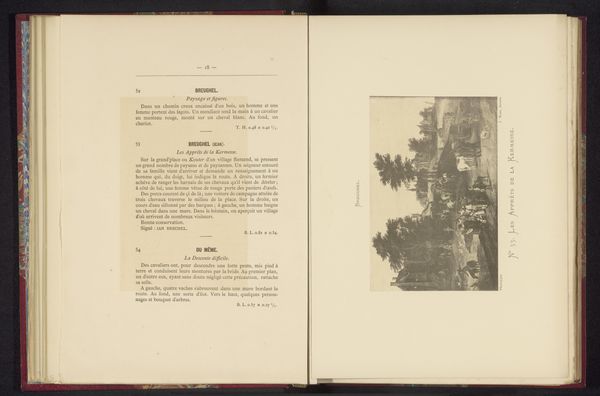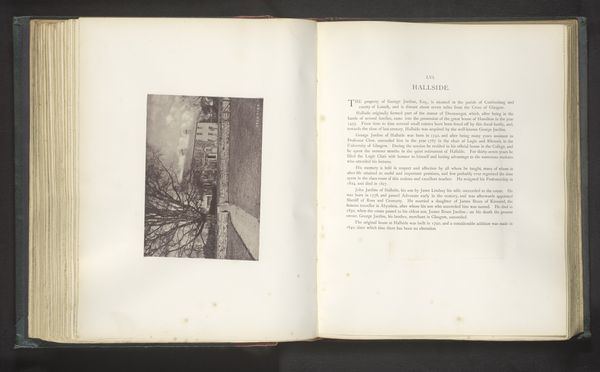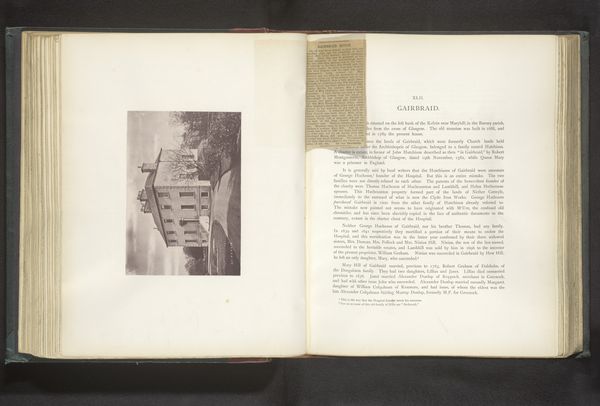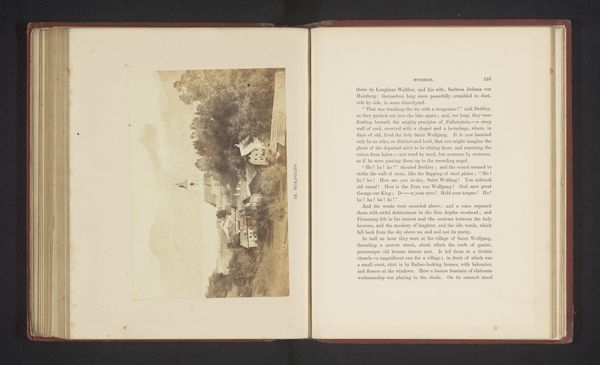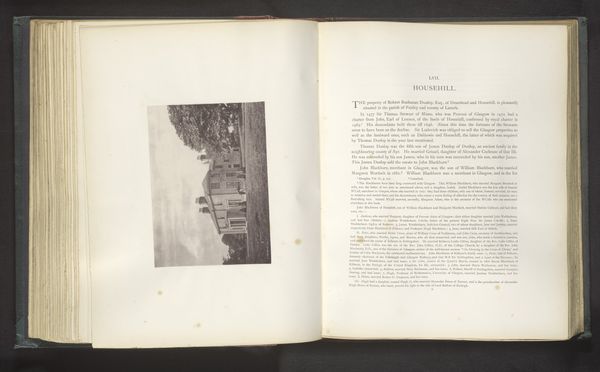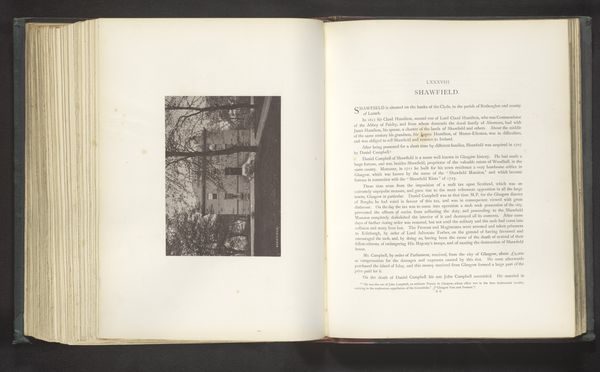
print, photography, collotype
# print
#
landscape
#
photography
#
collotype
#
building
Dimensions: height 115 mm, width 160 mm
Copyright: Rijks Museum: Open Domain
Curator: What a striking image. Thomas Annan’s "Clober," a collotype print made before 1878, captures a building in a landscape setting. The print appears within the pages of an opened book, complete with facing page text. Editor: Yes, it feels somewhat muted, a grey tonality pervades the building itself. The branches of a prominent tree soften the angular architecture and suggest weathering over decades. It appears to be documenting something almost nostalgic. Curator: The materiality is central here. Annan’s choice of collotype, a photomechanical printmaking process, indicates a specific moment in the history of photographic reproduction. Collotype allowed for larger print runs than earlier photographic methods, serving the growing market for accessible imagery and information, of documenting architectural forms. Editor: Exactly. This photograph wouldn't exist outside of social and political conditions of 19th century Scotland. "Clober" might have served several purposes—documenting architecture, preserving visual records, and feeding demand from a bourgeois that want to gaze at rural architecture from afar. How do the landed gentry shape the popular imagination through pictures like this? Curator: That interplay between artistic choice, industrial means, and capitalist drive interests me deeply. Looking at this through the lens of material culture, we might ask: who was accessing these prints? Were they circulated as independent artworks, or as part of a larger project of architectural record-keeping? How does its status as a print effect its monetary and social value, when compared with its painted rendering, for example? Editor: That last point reminds me to what extent this single print functions as a part of broader narrative. This might form part of some inventory and create not simply an aesthetic experience, but construct an ideology around taste and class too. It would be good to contextualise who paid for it, what market was it serving. Curator: The fact it is printed in the pages of the opened book enhances these kinds of possibilities of circulation—serving commercial and social narratives and, perhaps more deeply, cultural preservation and documentation. Editor: Yes, Annan's photograph seems deliberately produced to create specific connotations. It creates narratives of permanence, stability, beauty. Let us try to question those narratives beyond the first glance.
Comments
No comments
Be the first to comment and join the conversation on the ultimate creative platform.
